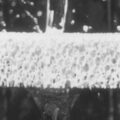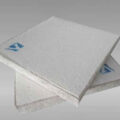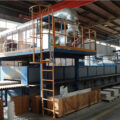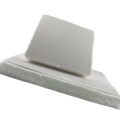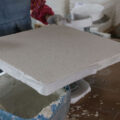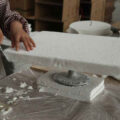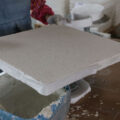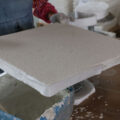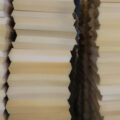The ceramic foamed filter provides a high-efficiency filter for the production of aluminum castings, and is widely used in the production of semi-continuous ingots and molded castings. Because of the low melting temperature of aluminum alloy, the high-temperature performance of foam ceramic filter material is not high, alumina foam ceramic filter can be used.
This alumina ceramic foamed filter uses Al2O3 as the raw material. Al2O3 has low activity, while the ceramic foam blanking method uses ceramic slurry to coat the three-dimensional reticulated foam plastic and has a low density. Compared with the alumina ceramic formed by pressure, the sintering mass transfer process is more difficult and difficult to obtain High sintering strength. By selecting the appropriate alumina powder gradation, increasing the bulk density, adding appropriate additives at the same time, forming a solid solution of alumina and additives, increasing alumina sintering activity, etc., sintered alumina foam ceramics with higher high temperature performance.
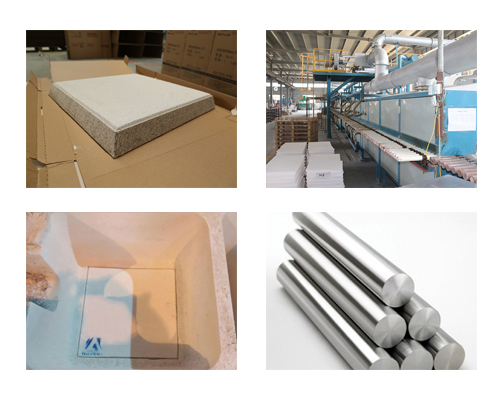
Alumina foam ceramic filter (CFF) is prepared by using polyurethane foam as a carrier, immersing it in a coating made of ceramic powder, binder, sintering aid, suspending agent, etc., and then squeezing out the excess coating to make The ceramic coating is evenly coated on the carrier frame to form a green body, and then the green body is dried and fired at a high temperature. Foam ceramic filters are divided into bonding type and sintering type: the former relies on a binder to bond the ceramic fine particles together; the latter relies on heat preservation at high temperatures to sinter and fuse the purer ceramic fine particles.
The unique three-dimensional connected curved pore network skeleton structure of the foamed ceramic filter makes it have an open porosity as high as 80% to 90%, and through three filtration and purification mechanisms, namely mechanical interception, rectification scum, and deep adsorption. It can efficiently filter out the large inclusions and most of the tiny suspended inclusions as small as tens of microns in the molten metal.

